|
|
| |
|
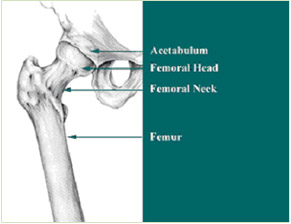 |
As one of the body's largest weight bearing joints, the hip joint plays a very important role. The hip is a ball-and-socket joint helping it to remain stable at extreme ranges of motion and during twisting. Having a healthy hip joint allows you to walk, squat, and turn without any pain. However, when a hip joint is damaged, it is likely to hurt when you move or sometimes even just standing still. |
|
|
| |
|
The bone ends of a joint are covered with a smooth layer called cartilage. Normal cartilage allows nearly frictionless and pain-free movement. When the cartilage is damaged or diseased by arthritis, joints become stiff and painful. Every joint is enclosed by a fibrous tissue envelope or a capsule with a smooth tissue lining, called the synovium. The synovium produces fluid that reduces friction and wear in a joint. |
|
| |
|
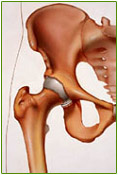 |
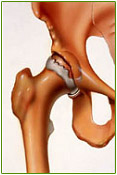 |
| A Healthy Hip |
A Damaged Hip |
|
|
| |
|
Hip replacement, also called arthroplasty, is a surgical procedure to replace a damaged hip with prosthesis (an artificial joint). This surgery may be considered following a hip fracture (breaking of the bone) or for someone who has severe arthritis. |
|
| |
|
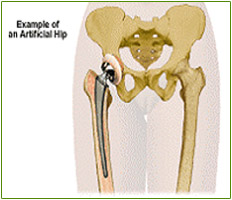 |
In a normal hip joint, the top of the upper leg bone (femoral head) fits into the hip socket of the pelvis, known as the acetabulum. Hip replacement surgery involves replacing the stem (long part of the bone) and head of the femur and the acetabular "cup" with prosthetic components. First used in the 1960s, the procedure has shown great success over the decades, with 95 to 97 percent of operations considered successful after 15 to 20 years. Artificial femoral head components are generally made of cobalt chrome, which is resistant to degeneration. |
|
|
Femoral stems are made of titanium or cobalt chrome. Polyethylene (a form of plastic) is the standard material for acetabular cups. Depending on patient bone strength, the pieces are either held in place by cement or by "ingrowth" technology, in which the bone grows between small beads or mesh on the surface of the prosthetic components.Hip replacement surgery is done through an incision about 6 to 12 cm (2 to 5 inches) in length, which is later closed with sutures or staples. The operation takes between 60 and 90 minutes. Physical therapy, the key to successful joint replacement, begins in the hospital the day after surgery. |
|
| |
|
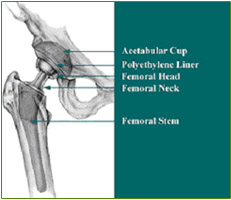 |
Most patients find that hip replacements provide immediate pain relief. Patients with cemented hip replacements can put pressure on the leg right away, while those with ingrowth replacements need to allow about 6 weeks for the bone to grow in and be more protected.Hip replacements make it possible for patients to engage without pain in light activities, such as walking, doubles tennis and golf. However, more strenuous athletic pursuits - such as basketball jogging, downhill skiing and other activities that put intense pressure on the hip -- should be avoided. |
|
|
These activities can loosen the replacement joint, making it more likely that patients will later require a revision joint replacement. Patients should also avoid crossing their legs or do squatting or lifting the leg with the prosthetic joint above a 90 degree angle in relation to the body. In rare cases, these movements can dislocate the replacement joint. |
|